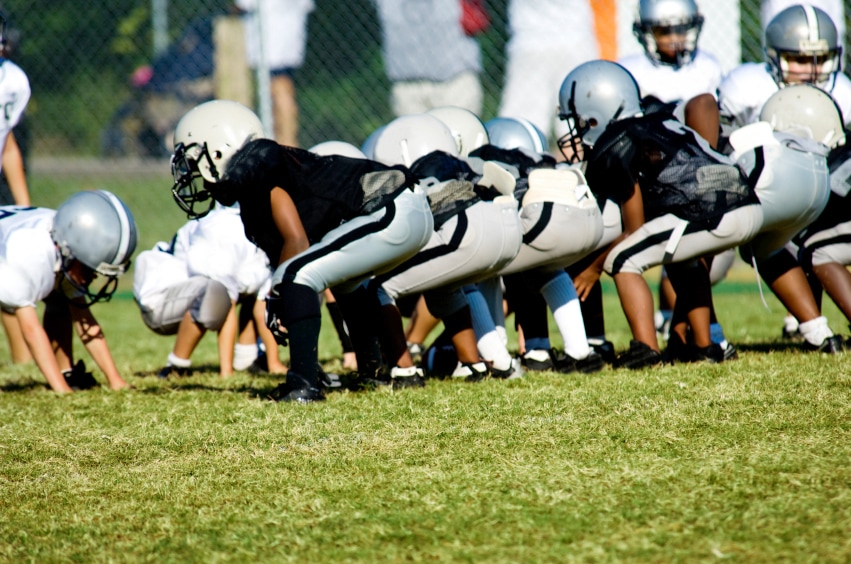By Alexander Powers, M.D., Pediatric Neurosurgeon
Wake Forest Baptist Health – Brenner Children’s Hospital
Every year, we hear numerous reports of young athletes who suffer life-threatening head injuries while playing sports. The most recent was just a few weeks ago in upstate New York, when a 16-year-old died from blunt force trauma after a seemingly typical play during a high school football game.
Because of these stories as well as recent attention on concussions spotlighted by the NFL, many researchers are focusing their efforts on head injury prevention. I am proud to say that Brenner Children’s Hospital, a part of Wake Forest Baptist Health, is at the forefront of this research. With our dedicated Concussion Clinic, we are able to provide the best care possible to children with head injuries, while conducting unprecedented research that will be used to save young lives.
Concussion: Defined
So what is a concussion? Most parents understand that it’s a brain injury, but aren’t very clear on what causes it. A concussion is the most common type of Traumatic Brain Injury (TBI). It occurs when the brain is bumped or shaken, causing a disruption in the brain’s synapses, or the way in which brain neurons connect and communicate with each other.
Causes of Brain Injuries
It doesn’t take a football field to sustain a head injury. All it takes is a bump on the head – and kids bump their heads a lot. Head injuries can come from monkey bar accidents, rough play and wrestling, and even falls from bed. Bicycle crashes are a another common cause of TBI, and riding on anything with wheels and without wearing a helmet – scooters, skateboards, roller blades, rip stiks – is a brain injury waiting to happen.
Strapping on a helmet decreases your chances of sustaining a TBI on a bike by 90 percent. Make sure that the helmet fits snugly on the head and the strap is buckled under the chin. If the helmet is too big or small, or if it is unbuckled, it does not do its job. Unfortunately, I see a lot of kids who injure themselves in their own driveway because of not wearing a helmet. Parents need to keep this in mind when they are riding too!
Symptoms of Brain Injuries
Symptoms can run the gamut from mild to severe: persistent headaches, aversion to bright lights, agitation and mood swings, trouble concentrating, difficulty sleeping, nausea or vomiting, and even coma.
When it’s more than just a “head bump”
Regarding symptoms, nausea and vomiting alone don’t bother me. It’s a pathological response when a child suffers a head injury, and it’s pretty common. If he is fully awake and alert, and can say his name and converse appropriately, it’s fine to watch him at home. Even a little amnesia surrounding the event itself is normal. Make sure he is hydrated and that he feels safe. And try to have him hold off falling asleep for a few hours, so you can observe his behavior for additional symptoms.
But if your child has difficulty answering simple questions like his birth date or his location, if he’s falling asleep and it’s not his bedtime or naptime, or if your child is confused and slurring his words, take him to his pediatrician or bring him into the emergency room.
The best gauge is a parent’s instinct. If your child suffers a head injury and your instincts are to have him seen, then call your physician or bring him into the emergency room. Brenner Children’s Hospital is the state’s only Level 1 pediatric trauma center and the Emergency Department has 24/7 coverage with pediatric neurosurgeons. We can do a formal evaluation and run any necessary tests or scans. It’s always better to play it safe, and give yourself peace of mind.
Research on Concussions and Traumatic Brain Injuries
There are still a lot of unknowns with TBIs, but through the Concussion Clinic at Wake Forest Baptist Health, we are able to diagnose and treat brain injuries in our backyard, while conducting important research that will be used worldwide.
For instance, we have received research funding to install sensors in football helmets in the Winston-Salem/Forsyth County school system. We have already applied this same technology in the helmets of Wake Forest football players. These sensors allow us to measure the force that is applied to a player’s head during impact. Through the data we collect, we can develop a threshold for when to pull a kid out of a game, how to treat it, and how long they’ll need to rest.
Concussions and head injuries still hold a lot of mystery for us. How much of an impact a child can absorb varies from person to person. Through surgery, we understand that some people have thicker bones than others. So each child’s bone structures are unique. Some children can absorb more of an impact through their bones instead of their brain. Because everybody sustains concussions differently, we hope to isolate the parts of the brain that are injured, and correlate that with their specific symptoms. This has never been studied before, so it’s exciting to know that this research will save lives.
For more information about children’s health, visit www.brennerchildrens.org. To schedule an appointment with one of our physicians, call 888.716.WAKE(9253)














